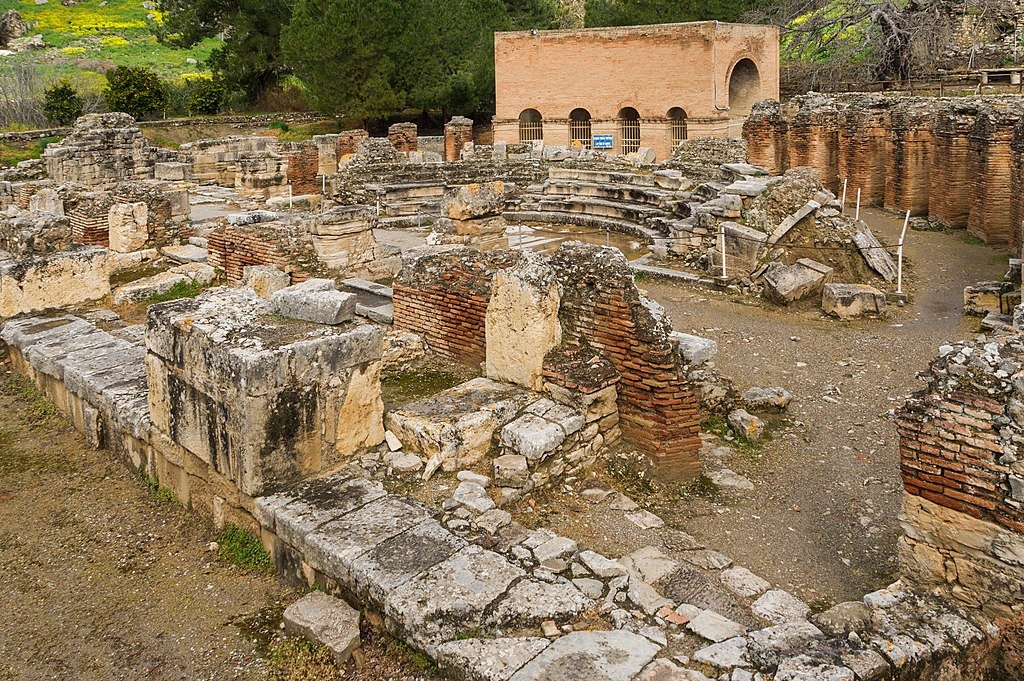The Archaeological Site of Gortyna lies in the heart of Crete’s Messara Plain, near the village of Agioi Deka, about 45 kilometers south of Heraklion. As one of the island’s most significant ancient cities, Gortyna holds a long and rich history. It first emerged during the Minoan period and later became the capital of Roman Crete and Cyrenaica. Unlike other sites, Gortyna remained continuously inhabited for more than a thousand years.
The site features structures from many historical periods. Most visitors begin their tour at the Gortyn Law Code, a massive stone wall inscribed with ancient Greek legal texts from the 5th century BCE. This remarkable code offers one of the earliest and most complete examples of written Greek law. The text covers family, property, and civil law, showing how advanced the legal system was during that time.
Next, visitors often explore the Odeon, a small Roman theater located next to the Law Code. The Roman Praetorium, once the residence of the Roman governor, stands nearby and showcases impressive stonework. In addition, the ruins of Roman baths, fountains, and aqueducts show how advanced the city’s infrastructure once was.
Moving further through the site, visitors will find the Basilica of Saint Titus, one of the earliest Christian churches on Crete. According to tradition, Saint Titus, the first bishop of Crete and a follower of the Apostle Paul, preached and died here. This connection adds religious significance to the area.
Moreover, statues, column fragments, and ancient inscriptions lie scattered throughout the site. These remains give a clear picture of the grandeur and cultural richness that defined Gortyna in Roman times.
The Archaeological Site of Gortyna typically opens daily, although the hours may change depending on the season or public holidays. Entry requires a modest fee, with discounts often available for children, students, and seniors. While basic amenities such as restrooms and a ticket office are present, visitors will not find cafés or gift shops on-site, so planning ahead is helpful.
Comfortable footwear is strongly recommended, as some paths are uneven and may be challenging for those with limited mobility. Photography is generally allowed, though drone use may require special permission.



Comment (0)